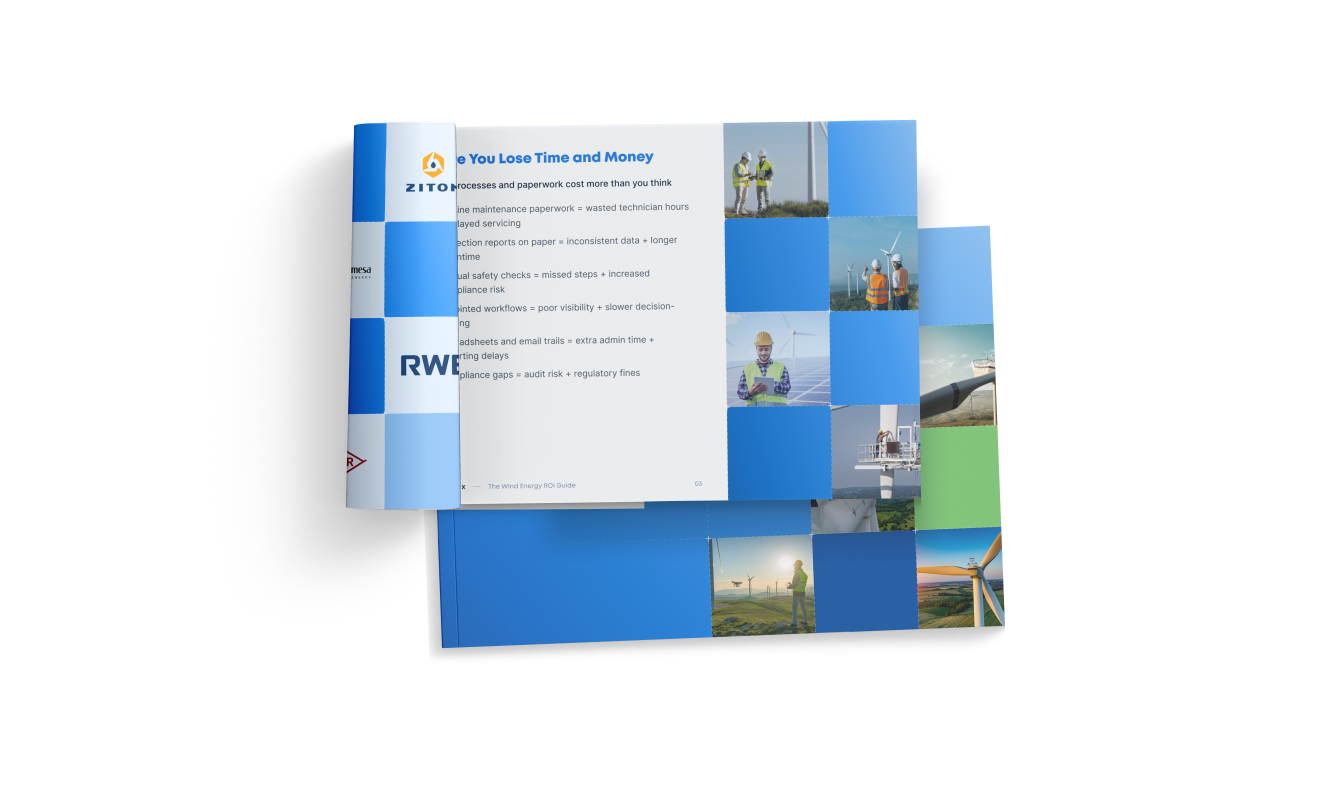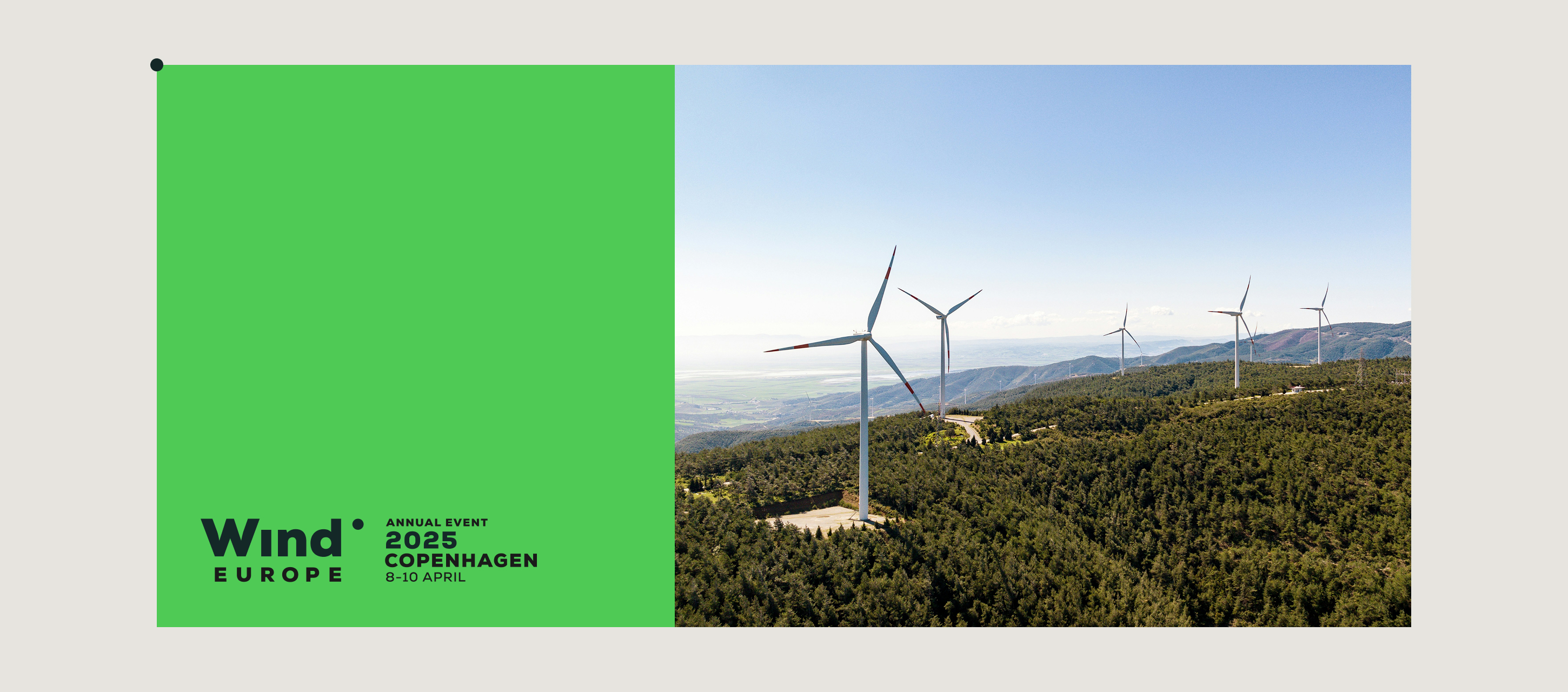Earlier this month, Copenhagen hosted one of the year’s most influential gatherings in the wind energy calendar. WindEurope 2025 brought together more than 16,000 participants and over 550 exhibitors, who discussed the trends and evolving priorities in the European wind sector.
Fluix’s Director of Strategic Business Development Masha Imas was there to experience it all firsthand. And now, we’re bringing you the highlights – the trends that every wind energy operator should keep in focus.
Contents:
1. Digitalization Is Finally Getting Real
In past years, “digital transformation” often felt like a buzzword, and everyone was tired of it. This year, it felt real.
Operators, OEMs, and asset managers spoke with a new kind of clarity. They talked about real applications: mobile data capture, AI-driven analytics, predictive maintenance, and digital twins. But more importantly, they talked about people.
Time and again, we heard it – frontline teams won’t adopt tech that’s complex or disconnected from their daily workflows.
We at Fluix were glad to hear it said out loud. It affirmed something we’ve believed all along: technology should support the workflow – not the other way around.
To support our claim, Fluix offers wind energy teams solutions tailored for the field – including turbine inspections, safety audits, and maintenance reporting – all from a mobile-friendly platform that works even offline. Because we know how critical real-time connection and synchronization are for your operations.
The Wind Energy ROI Guide
See how Fluix can help you simplify inspections and maintenance, cutting operational costs and saving hours


2. The Industry Needs People, Not Just Power
One of the most grounded discussions was about people as WindEurope 2025 gave space to voices focused on the future workforce.
Sessions on talent pipelines, education programs, and cross-border training talked about building a culture where young professionals want to stay and grow.
One speaker said it best: the future of wind energy depends just as much on the next generation of engineers and electricians as it does on the next generation of turbines. That stuck with many in the room.
We can add that that statement is backed by data. According to the Global Wind Workforce Outlook 2024–2028 Report, the industry will need over 532,000 wind technicians by 2028, but faces a shortage of more than 200,000 skilled workers. And offshore roles are especially impacted due to high turnover and complex access conditions.
This makes workforce optimization essential. And not to brag, but with tools like Fluix, wind operators can do more with their existing teams – automating paperwork, enabling mobile inspections, and keeping workflows running even offline.
3. Scaling Wind Is Now a Strategic Must
Let’s zoom out a bit with this one. Across panels and coffee line conversations, people emphasized that scaling up Europe’s wind capacity is a strategic necessity. Industry leaders repeatedly called for a strengthened domestic manufacturing base to avoid over-reliance on international supply chains.
That also included a focus on faster permitting processes and greater support for early-stage project development. It’s clear the sector is growing, but to meet 2030 goals, it needs to grow faster – and smarter.
4. Electrification Is Key, But Policy Must Catch Up
We all know electrification is central to decarbonizing transport and industry. But the message repeated was: policy isn’t moving fast enough.
Throughout the summit, there were loud calls for governments to cut non-energy taxes from electricity bills and to expand access to long-term PPAs. Because to electrify efficiently is to make clean energy affordable. Without that, even the most ambitious targets risk falling short.
5. The Delivery Gap Is Real
Talking with different project leads, one concern came up again and again: the gap between targets and reality is getting harder to ignore.
While countries have set bold goals for new wind capacity, many participants shared their frustrations about slow permitting, delayed grid connections, and inconsistent coordination across regulatory bodies.
Almost every panel reinforced the same point: we need governments, regulators, and operators to align – and we need it now.
6. Offshore Wind Takes a Central Role
Floating technologies and cross-border grid integration dominated the offshore wind conversations. Especially among delegates from North Sea and Baltic nations who are today full of offshore ambitions.
It wasn’t just the excitement though. Developers talked openly about the complexity of maritime spatial planning and coordinating international infrastructure. The need for clear, consistent regulation across borders was also there.
Looking Ahead
Leaving Copenhagen, the energy in the air was about urgency as much as it was about turbines. WindEurope 2025 made it clear: the wind industry is not waiting for the perfect conditions. The sector is moving forward, even if at times unevenly.
The ingredients for success are known: political support, public backing, technical expertise, and cross-border collaboration. Now it’s a matter of synchronizing them.
The next WindEurope gathering is already on the horizon. But the work? It’s already begun.
And this is where Fluix stands ready to support. As a platform built for field teams, we understand that operational progress happens in remote sites, offshore vessels, and with each timely turbine inspection. Our role is to simplify the complex for wind energy business. By digitizing inspections, streamlining compliance, and connecting teams even when they’re far from a signal.
The future of wind energy is ambitious. But also achievable. And we’re here to help make it happen.





